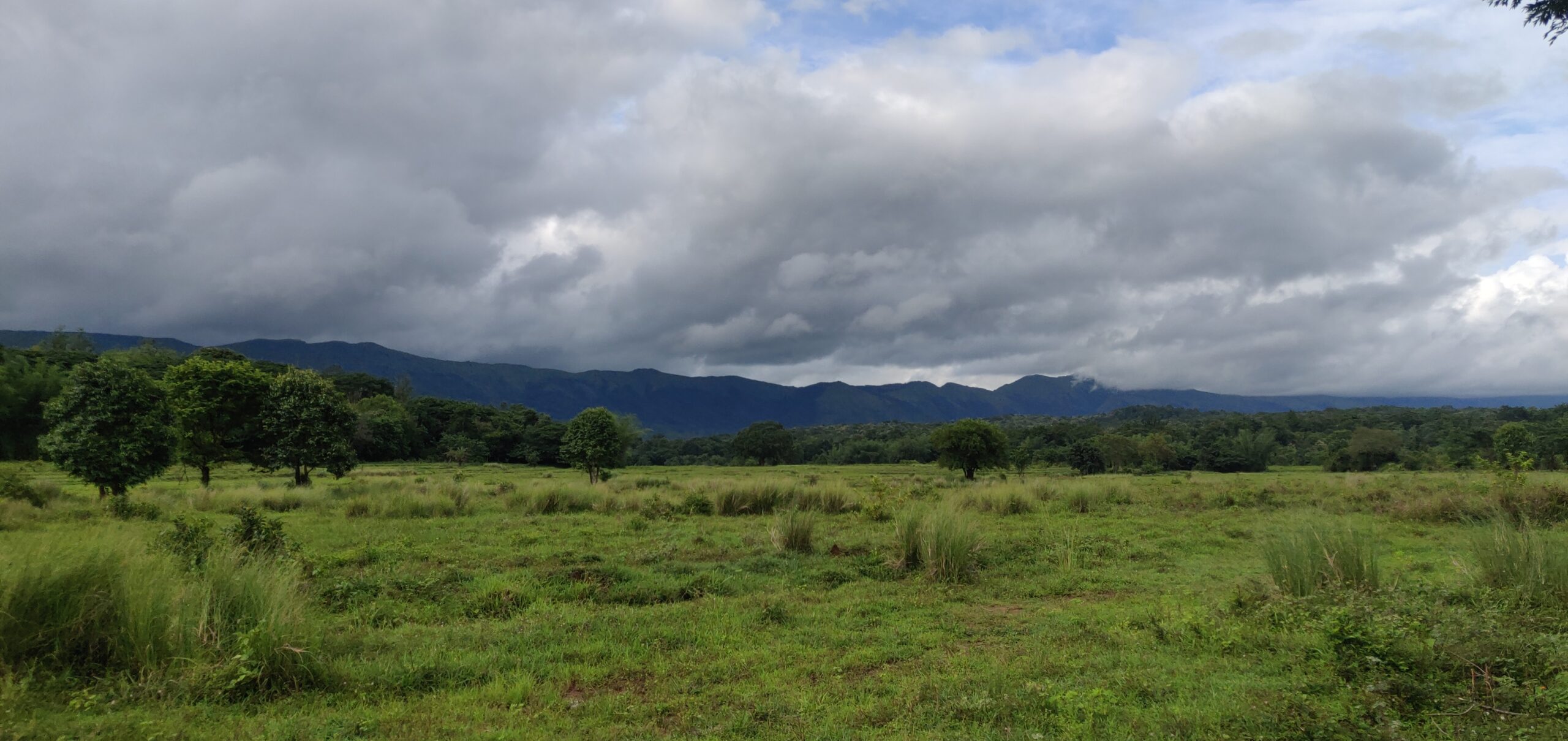Protecting the Gandhadagudi
Often it takes only passion and courage to achieve the ‘impossible’. Read the story of how one man’s passion helped a forest under attack recover.
There is a story often not told, of the foot soldiers and their battle with the looters of the land. The looters often come in the guise of authorities, smugglers, hunters, companies, communities of people and so on. Unlike the Navi who use guerrilla tactics and their bow and arrows, these vigilant defenders depend on the courts and the justice system. Commitment and perseverance are the by-words for the WildCATs of Chikmagalur, Karnataka.
Led by ‘Pied Piper’ D V Girish, the small but extremely dedicated band of youth and adults, is ready to jump into any required action — action of the kind that has resulted in major victories for conservation of forests and wildlife in the region. Sometimes, it is about keeping baying mining companies in check, at other times it is about spreading awareness on uncontrolled tourism in pristine areas. But always, it is about being on watch.
How did it begin? That takes us back to the ‘power of one’, often discounted and not recognised.
Besotted with the mountains and jungles, Girish began his journey of exploring the wilderness, way back in late 80s. A local resident of Chikmagalur whose dad owned a coffee estate, he had just returned home after studies in the city and was exploring the wilderness spawned by the river Bhadra. With a few of his friends sometimes, and at times alone, Girish would go riding through the sanctuary. What he saw left him distraught. Timber was being smuggled, bamboo extracted in large numbers and hunting rampant. It was all being done openly in what was a protected area, the Bhadra Wildlife Sanctuary.
Sanctuary under attack
The protected forest stretching across 492 square kms lies in the Western Ghats region of Karnataka state, and is spread over Chikmagalur and Shimoga districts, with a major part in Chikmagalur district. The reserve is surrounded by the hill ranges of Mullaianagiri, Hebbegiri, Gangegiri and Babaudangiri. The reserve gets its name from the river Bhadra that flows through it and is fed by its perennial tributaries. The sanctuary is almost land-locked with mountain ranges forming a horse-shoe all along its boundaries in the east, west and south and the Bhadra Reservoir in the north.

The lush forests of BTR
The upper elevations and the hillsides are covered by wet evergreen forests and lower slopes and valleys with bamboo dominant moist deciduous forests. The Big Bamboo, Bambusa arundinacea, the tallest growing grass species that can reach up to 100 feet, is the most common of the bamboos in Bhadra.
Large carnivores found in the reserve are tiger, leopard and dhole. Smaller carnivores include several lesser cats such as Jungle cat, Leopard cat, civets, common mongoose, stripe necked mongoose, brown mongoose, Jackals, sloth bear.
The ungulates in Bhadra are gaur, sambar, chital, muntjac, Indian chevrotain/Mouse deer and wild pig. Elephants are found in all parts of the reserve and mostly migrate locally within the area. Primates like the common langur and bonnet macaque can be found here.
BTR has over 200 species of birds have been enlisted in this forest. Some of them includes Malabar pied hornbill, Kestrel, Imperial pigeon, Emerald dove, Brown fish owl, Great black woodpecker, grey-headed flycatcher etc. First declared a wildlife sanctuary in 1973, it became a tiger reserve in 1998.
That was the Eden that was under attack by smugglers, timber and bamboo lobbies and poachers.
British legacy
The depletion of the forests in the region dates back to the British rule, when Mysore paper Mills was established in Bhadravathi town in 1920 and the forests of Bhadra tiger reserve became the source of raw material for the mills. Timber and bamboo was extracted and supplied to the mills and also to sustain the rail and shipping requirements. People who came for the extraction began settling in the forests. After Independence, timber smuggling became rampant, especially between 1987-1996. The department was poorly staffed and dual management (wildlife and territorial divisions) let to varied approaches towards extraction and protection.

A river (Bhadra) runs through it…
Many villagers around Bhadra had made this extraction their source of livelihood. People would go into the park, select big trees, identify species, then go in teams and cut the selected trees and saw them into transportable pieces of logs. These would be carried on bicycles or hitch them to bullocks and drive them to their villages. On sighting forest department staff they would simply cut the ropes so the logs were left behind and the empty bullock carts went home. Most often to maximise the efficiency, the entire village of 40 or 50 men would all come at once, overpowering the staff in numbers, recounts Girish.
The timber smugglers also came in via the river route. They would enter the park through the backwaters, travelling by coracle boats and be well prepared to camp and hunt.
Gun battles in the jungles
Armed with guns, they would hunt animals for meat and stay in the forest till the timber was collected. Fearing for their lives, the department staff who were poorly armed mostly, stayed away. Girish, who was honorary wildlife warden, would move around on his bike, looking out for movements.
Initially the forest department was unable to stop the smuggling due to sheer numbers of people involved but later on, they were able to beef up staff and tackle the smugglers. At times the forest witnessed gun battles between the two sides. Soon, the department was able to put a complete stop to the smuggling.
The timber smugglers did not stop with teak but also hunted elephants for tusks. Organised teams would track big tuskers, shoot them, remove the tusks and leave. The last such incident of elephant poaching was reported in January 2004.
Bamboo saga
Around the same time as timber smuggling, a chance event set Girish and friends to track the plight of bamboo in Bhadra sanctuary. In the early 90s he would see trucks loaded with bamboo, being transported through the main roads of Chikmagalur. Stacked way beyond permissible limits, they soon found out that the load was double the quota allowed. However, complaining about this did not help. Also, he often came upon truckloads of bamboo lugged from the sanctuary, with over a dozen lorries moving through the protected area.

D V Girish surveying the mountainscape and wilderness
No one seemed to be asking questions, either about the bamboo or the camping of large numbers of people in the forest around water sources that saw heavy elephant movement usually. The disturbances aside, it was common practice of the campers to set snares for wild meat, extracting forest produce, etc. Believed to be people of the Medar societies, they were allowed to extract bamboo towards their livelihood of weaving it to make craft items. However, there were also many fake applicants and the head person belonged to a different community altogether, recalls Girish.
The bamboo was extracted at a nominal Rs 15 they paid per stick. Much of the bamboo ended being sold in the city markets for over Rs 50. When he appealed to officials to take action, Girish would be told that the weavers were poor and earned a livelihood from the bamboo weaving. It was a different story that many of the men he met sported thick gold chains and rings on their fingers! He was dismayed that the forest department allowed such large numbers of people into the forest and left them unsupervised! There were attempts by the department to seize the illegal bamboo, but it was a tough task given the livelihood tag.
Eventually, the constant pressure by WildCAT C and other conservation groups, on the department fetched results and in 1996, the DCF Bhadra, Mr. Parameshwar stopped allotting bamboo from the sanctuary. Following the 2002 historic Supreme Court order, all extraction of bamboo, or anything, from sanctuaries was halted.
Forest fire
But the challenges in retaining the bamboo kept raising its head now and then. In 1999 when the bamboo began flowering after 60 years, there was fresh clamour for extraction based on fears spread among locals that the forest would burn during the flowering! A fire was set off by miscreants in 2004 and it again took the watchful eyes of the local conservation groups to detect it early and douse it, using labour from the coffee estates. But over 150 kms of the forest was burnt.

The mountains, forming a horse shoe shape, can be seen in the distance
Today, the burnt patches have rejuvenated and the traditional bamboo regeneration in Bhadra brings cheer to the hearts of its defenders. But there can be no relaxation, especially in the dry summers when all it takes is a negligent toss of a cigarette stump to cause destruction.
On the forest road from Chikmagalur to Muthodi you can spot a couple of them — grand old bamboo clumps with 100-150 odd shoots/culms measuring around 20 sq feet in width. That is reward enough for the warriors who have taken on the task of protecting their land and its natural inhabitants. A roar of a tiger or a tusker trumpeting comes as a bonus.
Jaya
(Founded by D V Girish and managed by Shreedev Hulikere, the WildCAT – C is a group of over 100 persons bound by their love of the land and its native inhabitants. Girish is the recipient of District Rajyotsava award, Protect the Tiger award by RBS, Tiger Gold award, Carl Zeiss Wildlife conservation award and more. Shreedev H, the managing trustee, too has served as honorary wildlife warden in the region and won awards for wildlife friendly coffee cultivation and biodiversity conservation in plantations. The group has many other estate owners, students, professionals and educators bound by the love of the wilderness.)
